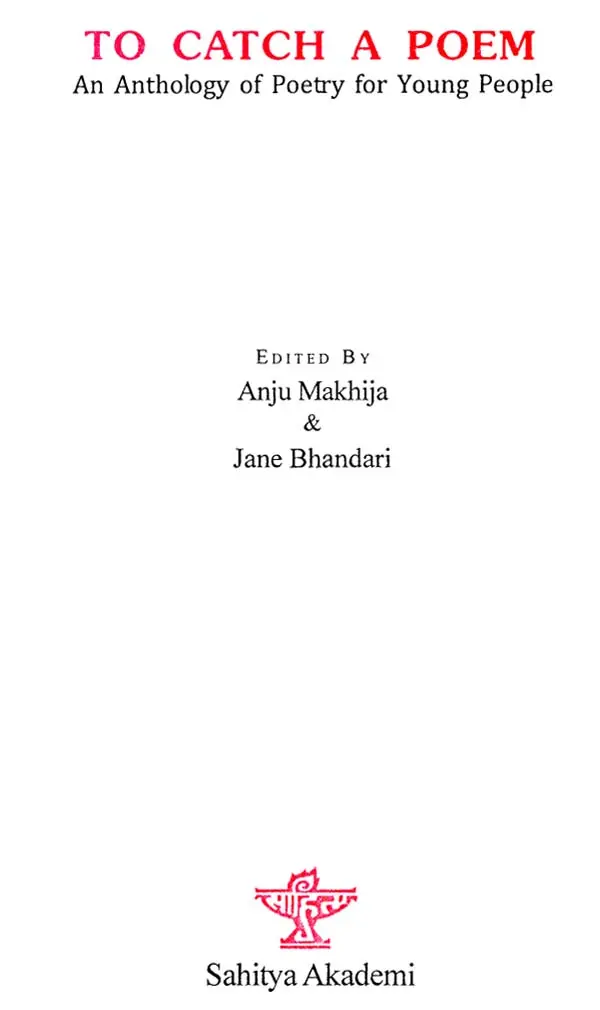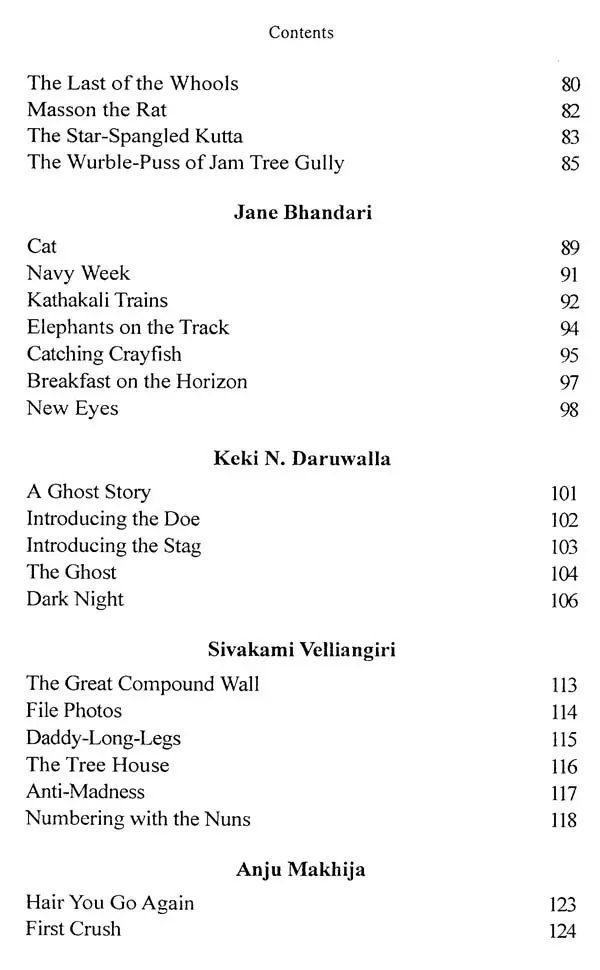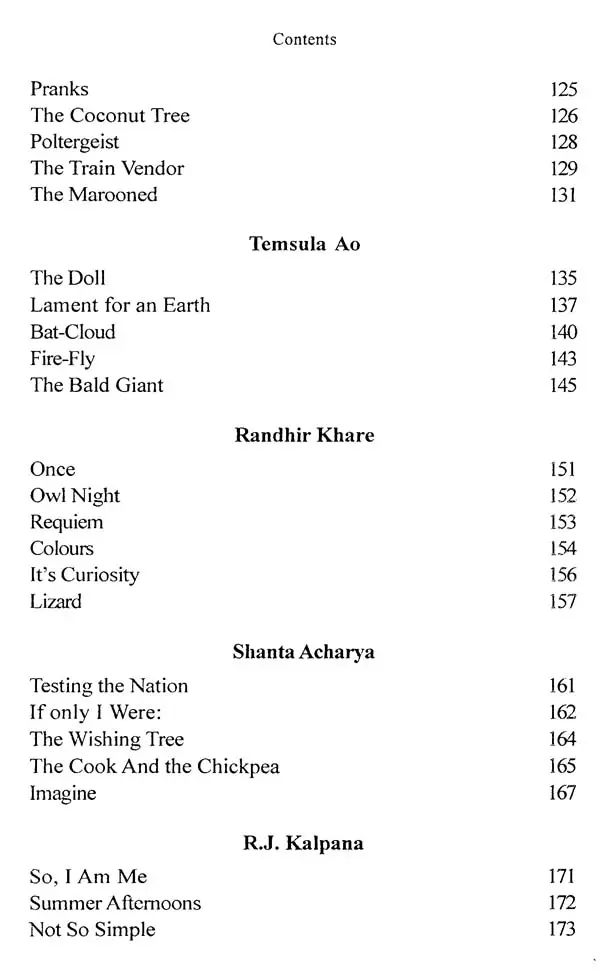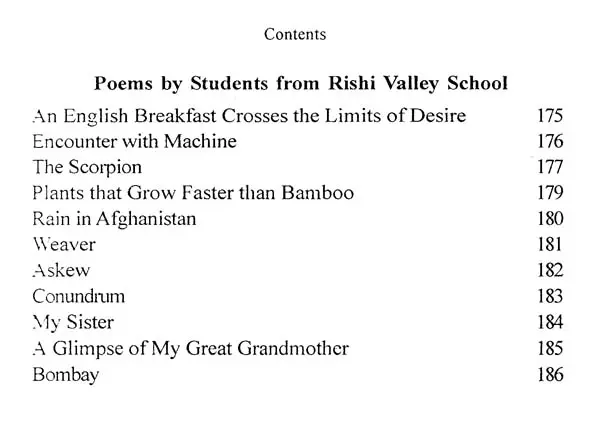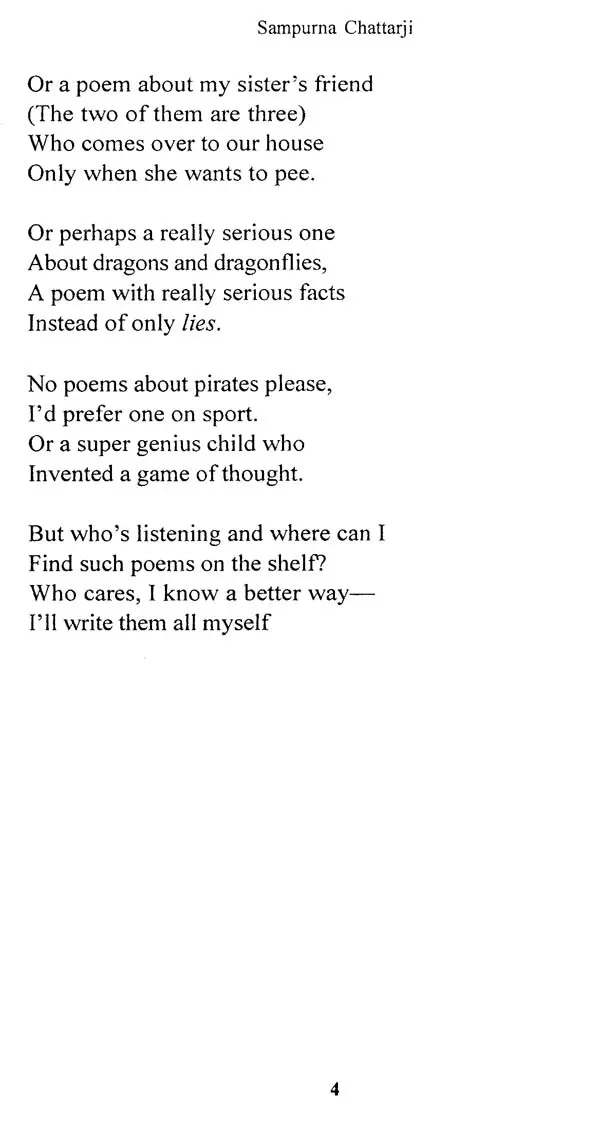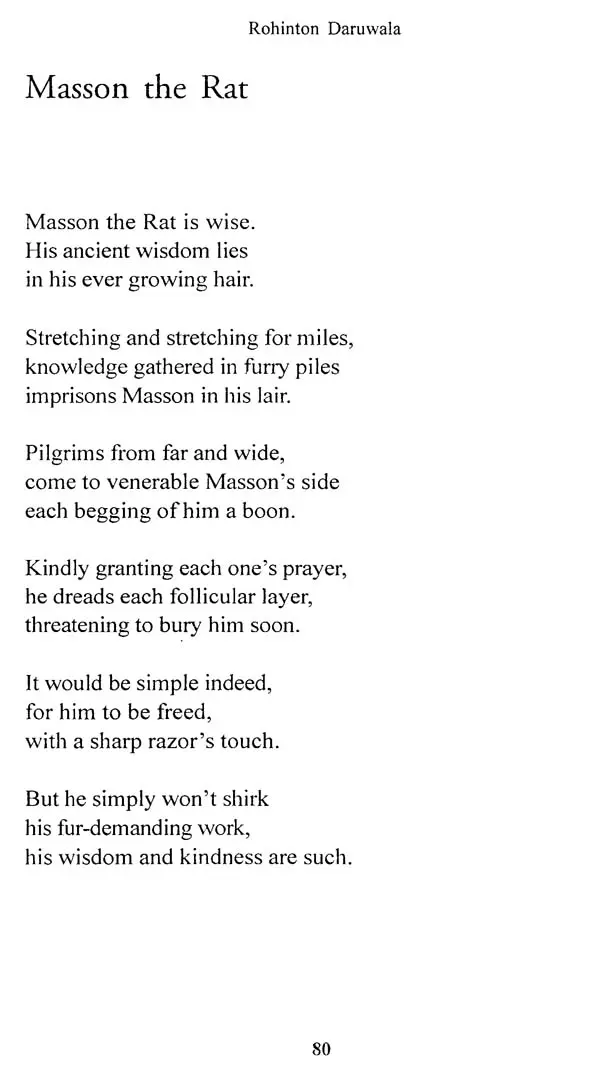
To Catch A Poem (An Anthology for Young People)
Book Specification
| Item Code: | UAM336 |
| Author: | Anju Makhija, Jane Bhandari |
| Publisher: | SAHITYA AKADEMI, DELHI |
| Language: | English |
| Edition: | 2014 |
| ISBN: | 9788126042500 |
| Pages: | 182 (Throughout with B/W Illustrations) |
| Cover: | PAPERBACK |
| Other Details | 8.50 X 5.50 inch |
| Weight | 270 gm |
Book Description
Mostly, words express simple ideas and emotions, such as being hungry, tired or sleepy, angry or in love. If you only read magazines, listen to pop music, or watch TV, you may never discover that words have a secret life of their own. Poets, of course, know all about it and are generally eager to share their discovery. How does a poem come into being? Sometimes it just flits along, whistling airily, and the poet catches it in mid-air, like a butterfly, and sets it down on the page. But many poems refuse to be captured so easily: SS Prasad writes that it can be like trapping wild elephants! Using every wile available, the poet stalks the poem, pounces...and misses. Never mind! He gets up and tries again. Or else he goes to bed, and at three in the morning, a poem wakes him from his dreams, all ready to be written down, driving him out of bed to hunt for paper and pen before it gets away from him. Many writers actually sleep with a notebook under the pillow. Even then, our sleepy poet may find himself frantically chasing some elusive lines that have vanished into the dark. Some poems are inherently neat and tidy, while others arrive looking crumpled and messy, with extra 'bits' sticking to them. Then the poet must clean up, or edit, the poem, a process that can go on forever. You might wonder how he ever gets his unruly poem safely down on paper. Often a poet has looked at his verses, just waiting to be published, and has thought, oh no, that line needs to be removed, and this stanza would read better here...and that line would be better there...and so it goes. The page is full of crossings-out and lines meander round the margins, upside down and back-to-front. But finally, it's done, and our poet contemplates his work with satisfaction.
**Contents and Sample Pages**
